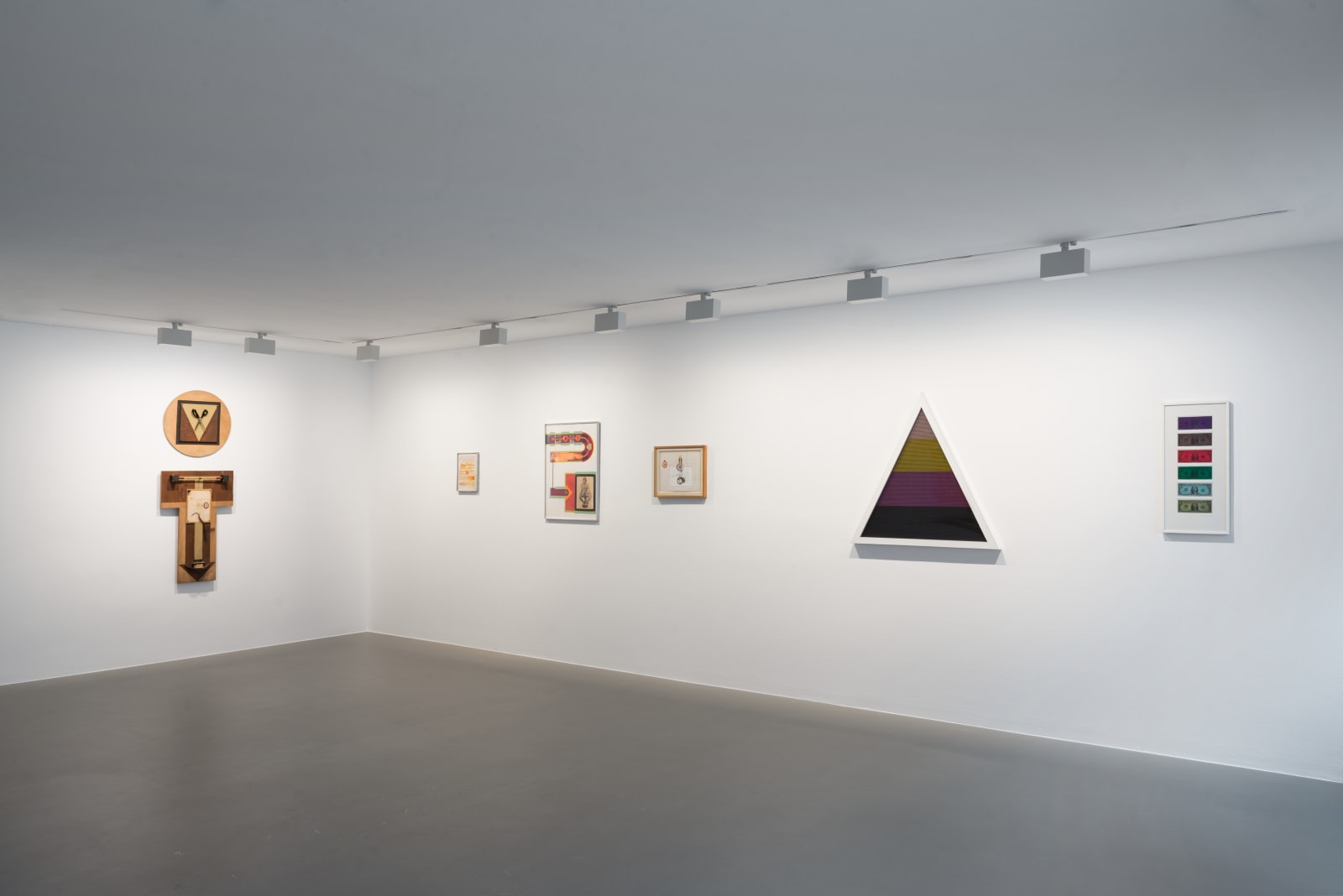

Overview
Mapplethorpe enjoyed using the instantaneity of the Polaroid camera, with which he elaborated a creative language to record the present moment, to play with the small picture frame or to embody a seductive sexuality.
Galerie Thaddaeus Ropac presents the exhibition Objects, with unique pieces by Robert Mapplethorpe from his early years as young artist, ranging from collages to his first Polaroids.
From 1963 to 1969, Mapplethorpe attended the Pratt Institute in Brooklyn, where he studied painting and sculpture, and majored in graphic art. During these formative years he produced numerous three-dimensional objects, drawings and collages using all kinds of mixed media. It was not until 1971, when he borrowed a Polaroid camera, that he introduced photography into his collages, along with cut-outs from books and magazine clippings. Back then everyone was taking Polaroid pictures. It was a very accessible medium for middle-class America. Mapplethorpe enjoyed using the instantaneity of the Polaroid camera, with which he elaborated a creative language to record the present moment, to play with the small picture frame or to embody a seductive sexuality. Only after 1975, when Sam Wagstaff – then curator of photography and collector of photographic works, as well as Mapplethorpe's mentor and lover – gave him a Hasselblad 500 camera, did Mapplethorpe begin to immerse himself in photography.
These formative years, from around 1968 to 1972, proved a decisive phase for Mapplethorpe, during which he moved rapidly from subject to subject and experienced abundant inspiration, which was later to develop into the core of his best-known photographic work for the next two decades.
In his early period he gravitated towards religious imagery, derived from his traditional Catholic upbringing. He was drawn by symbolic geometric motifs and made many collages and arrangements evoking a trilogy similar to those in Christian iconography but going beyond the bounds of traditional religious representation. He explored darker subjects such as black magic and Tantra Art, and redesigned Tarot cards, replacing the imagery with male figures taken from men's pornographic magazines.
Also included in the exhibition is the unique small format printed in 1986, of Mapplethorpe's famous fascinating self-portrait dated 1983, representing him as a youth with bony nubs of satyr’s horns jutting from his curly hair. Mapplethorpe chose this as the cover of an exquisite French-English edition of Rimbaud's poems A Season in Hell, illustrated with photographs by Mapplethorpe.
These objects are infused with tenderness, delicacy and instantaneity. They are rarities of his artistic depiction and can be read like visual poems. As essential part of his œuvre, they are part of the recent acquisition by the J. Paul Getty Museum and the Los Angeles Country Museum (LACMA) from the Estate of the Robert Mapplethorpe Foundation.











































































































































































